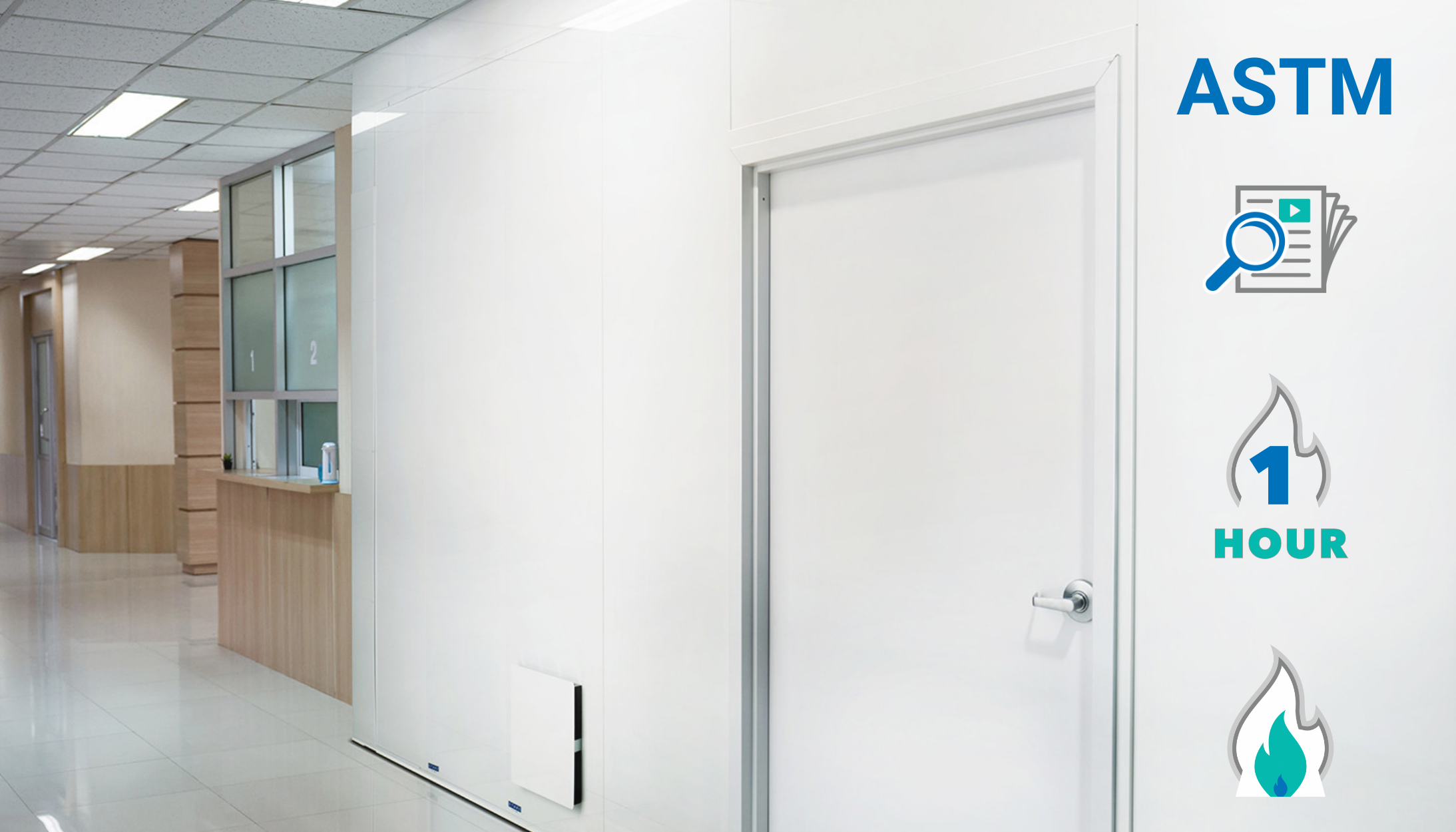
When conducting an occupied renovation in a hospital, a one-hour fire-rated temporary construction wall is often required by national or regional jurisdictions, especially in the absence of a working sprinkler system.
Requirements and testing specifications can vary by state, city, hospital, and even by project, making the process complex. One thing is clear: questions about fire-rated temporary walls have increased significantly over the past few years. This spike is likely driven by growing awareness of fire-rated barrier requirements and the limited options available.
We asked Joshua Brackett, PE, SASHE, CHFM, System Regulatory Director, Facilities Operations, Banner Health, and Co-Founder and Facilities Engineer at Legacy FM, to answer some of the most common questions about fire-rated temporary walls, including testing, ratings, and installation. You can learn more about Josh’s guidance on various fire safety challenges in occupied healthcare renovations here.
Understanding Fire-Rated Temporary Walls as Complete Assemblies
Before diving into testing and rating requirements, it’s important to understand that a fire-rated temporary wall is treated and listed as an assembly. This complete assembly forms the containment needed for fire safety compliance.
Traditionally, the only method for containing construction dust, debris, and noise with a one-hour fire-rated barrier was drywall. If a constructed assembly happens on-site with gypsum, all components must be built according to complete wall assembly listing test specifications. This includes:
- Stud types
- Ceiling and floor tracks
- Gypsum joints placement
- Screw types
- Screw spacing
- Screw head covering, i.e., joint compound
Any mistakes with these components can lead to non-compliance. As Josh notes, these errors frequently occur, often resulting in increased costs and delays to rectify them.
ASTM E119 and E84: Critical Fire Testing for Temporary Walls
Understanding ASTM E119 and E84 is essential for ensuring code compliance when selecting fire-rated temporary walls. Both tests are designed to keep people safe in the event of a fire. However, what each specifically tests for is often misunderstood.
What is ASTM E119?
ASTM E119 (UL 263) tests the fire resistance of an assembly, measuring how long it can contain a fire or maintain structural integrity. For an assembly to achieve a one-hour fire rating, it must prevent fire penetration for at least one hour.
What is ASTM E84?
ASTM E84 (UL 723) evaluates the exterior material’s flame spread and smoke development characteristics. It includes two testing indexes:
- Flame Spread Index (FSI): Measures how quickly flames spread across the surface.
- Smoke Development Index (SDI): Measures the amount of smoke produced during burning.
FSI and SDI results determine product class ratings (A, B, C, or D). Many hospitals require Class A fire-rated temporary walls for renovations. Key facts about E84 Class A ratings:
- Class A denotes high performance in fire conditions.
- All new hospitals occupied after July 5, 2016, must have Class A finishes, according to CMS’s adoption of NFPA 1010 (2012).
- New interior finishes must comply with construction requirements outlined in Chapter 43.4.3, which refers back to Class A ratings.
Learn more about ASTM testing in our QuickGuide.
Choosing Your One-Hour Fire-Rated Temporary Wall
When a one-hour fire-rated barrier is needed, keep in mind that ASTM testing requirements apply to the entire assembly. Each component plays a vital role in the system’s effectiveness.
The two primary ASTM tests differ in scope:
- ASTM E119 evaluates the assembly’s fire resistance, determining the one-hour rating.
- ASTM E84 tests the flame and smoke spread attributes of the surface material, leading to the required Class ratings.
Drywall assemblies come with a high risk of mistakes in component installation, which can result in non-compliance. Drywall also presents greater safety hazards, such as the risk of wall breaches that could release dust and pathogens in hospital settings.
The good news? Our FireblockWall™—the first and only reusable one-hour fire-rated temporary wall system—exceeds ASTM E119 and E84 Class A requirements and installs four times faster than drywall. Like our other modular solutions, FireblockWall is durable, reusable, and exceeds additional healthcare safety standards, including ICRA Class IV/V.
Want to Learn More About STARC’s Fire Rated Containment?

